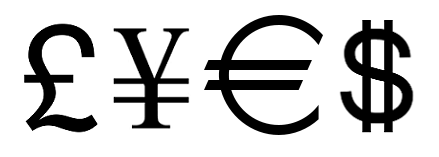Designers use a combination of language, signs, and symbols to communicate meaning. In this section, we’ll look at the construction of meaning by exploring the basic units of representation within the contexts of culture, history, and aesthetics.
Take a look at the readings and media below and consider the following questions.
Questions
- How are signs, signifiers, and the signified employed in visual communication? Consider examples from contemporary or historical advertising.
- How are non-literal devices used to convey meaning in advertising? Consider examples from contemporary or historical advertising that use simile, metaphor, metonym, synecdoche, irony, lies, impossibility, depiction, or representation.
Semiotics
The field of semiotics is defined as the theory of signs. Sean Hall notes in his book This Means This, This Means That A User’s Guide to Semiotics, “signing is vital to human existence because it underlies all forms of communication.”
Ferdinand de Saussure, often called the father of semiotics, identified a sign as composed of a signifier and a signified. The signifier is the sound-image that we see, speak or hear to refer to the sign. The signified is the concept that our mind conjures in relation to the sign. The sign is the whole of these parts.
- Sign: A sign is anything that creates meaning composed of a signifier and a signified.
- Signifier: A word, an image, a sound, anything we see, speak or hear to refer to the sign.
- Signified: The concept that our mind conjures in relation to the sign.
In the image below, the apple is a signifier. The concept that our mind conjures when we see this image is the signified. When you see the apple, you recognize it as a familiar piece of fruit. Same as if we saw or heard the word “apple” or if we speak/read another language: “苹果” or ” تَفَّاحَة” or ”manzana.” The context also matters. In this painting, if we are familiar with the story of Adam and Eve, the signified is also “temptation.”

Forms of signs
The signs we use to communicate are arbitrary and their meaning develops over time. Charles Sanders Peirce, another important figure in the field of semiotics, showed that signs can take different forms.
- Icon: signifier resembles the signified (e.g. a graphic image of a dog resembles an actual dog)
- Symbol: arbitrary learned relationship between the signifier and signified (e.g. we must learn from others that a dollar sign $ refers to money)
- Index: signifier is caused by or linked to the signified (e.g. we associate smoke with fire)



Watch the video below and review the readings to gain more understanding of these terms and how they relate to design.
Non-literal forms
As visual designers, we use language as words and images to communicate with our audience. It’s important to understand how meaning is made through communication and to be aware of how our messages are being transmitted and received. Non-literal forms of communication are important for design, advertising, illustration, filmmaking, fashion, and journalism because they help with the transmission of meaning but can also confuse meaning. Examples are simile, metaphor, metonym, synecdoche, irony, lies, impossibility, depiction, and representation. These are explained in the chapter “Ways of Meaning” in This Means This, This Means That: A User’s Guide to Semiotics by Sean Hall and also in “Rhetorical Tropes” on the website Semiotics for Beginners by Daniel Chandler.
Red Bull uses metaphor in their advertisements: Red Bull Gives You Wings! Drinking Red Bull doesn’t literally cause you to grow wings, but rather we relate it to gaining metaphorical flight in terms of energy or power. The definition of “give wings to” means to inspire or motivate someone to “fly” or soar – to achieve great things. Interestingly, Red Bull was sued for false advertising.

Semiotics: WTF?
Recommended Readings:
The reading links below will automatically open Hypothesis, a web-based annotation tool. Use Hypothesis to annotate as you read the texts. See Using Hypothesis for details.
- This means this, this means that: Semiotics — the study of meaning, UX Collective, Mario Van der Meulen, May 13, 2019
- “Rhetorical Tropes,” Semiotics for Beginners, Daniel Chandler [Website]
- de Saussure, Ferdinand. Course in General Linguistics Trans. Wade Baskin, New York, Philosophical Library, 1959. openlibrary.org
Resources and other texts
- “Ways of Meaning” Hall, Sean. This Means This, This Means That : A User’s Guide to Semiotics, Laurence King Publishing, 2012. ProQuest Ebook Central Pages 58-76 [City Tech Library Card Required]
- “A History of Symbols” by A Short Introduction to Graphic Design History is licensed under CC BY-ND 4.0
- “Attractive Things Work Better” Norman, Don. Emotional Design : Why We Love (or Hate) Everyday Things, Basic Books, 2007. ProQuest Ebook Central. Pages 17-33 [City Tech Library Card Required]
- Saussure: a Guide for the Perplexed : A Guide for the Perplexed, Bouissac, Paul. Bloomsbury Publishing Plc, 2010. ProQuest Ebook Central



